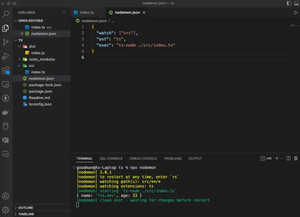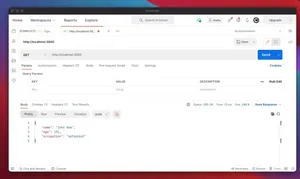Introduction
Sequelize.js is a popular ORM (Object-Relational Mapping) library for Node.js that provides a convenient way to communicate with a database using JavaScript rather than SQL queries. One common operation in SQL is the LEFT JOIN, which Sequelize can perform through its association and querying features. This tutorial will guide you through the process of using LEFT JOIN in Sequelize, from setting up associations to writing advanced queries.
Understanding LEFT JOIN
In SQL, a LEFT JOIN is used to combine rows from two or more tables based on a related column between them. It will return all records from the left table, and the matched records from the right table. If there’s no match, the result is NULL on the side of the right table. This operation is essential when you need to query related data across your database tables.
Setting up your Sequelize Models and Associations
Before performing a LEFT JOIN in Sequelize, you need to define models and associations. Associations in Sequelize establish relationships between tables. For instance:
const User = sequelize.define('User', {
// ... model attributes ...
});
const Project = sequelize.define('Project', {
// ... model attributes ...
});
// Define a One-to-Many relationship
User.hasMany(Project);
Project.belongsTo(User);
Performing a Basic LEFT JOIN
To perform a basic LEFT JOIN, you can use the findAll method with the include option as follows:
User.findAll({
include: [{
model: Project,
required: false // this is optional since 'required: false' is the default behavior for LEFT JOIN
}]
});
This query will retrieve all Users along with their associated Projects. If a User does not have any Projects, the Projects field will be an empty array.
Advanced LEFT JOIN Queries
Sequelize allows for more complex LEFT JOIN operations through the use of where clauses, attributes, ordering and grouping. For example:
User.findAll({
include: [{
model: Project,
required: false,
where: {
status: 'active'
},
attributes: ['name']
}],
order: [['username', 'ASC']],
group: 'username'
});
This will perform a LEFT JOIN and only retrieve Projects that are active, along with the Users sorted by their username and grouping the results by username.
Handling Null Values and Aliasing
When performing LEFT JOIN operations, you often encounter null values for missing related records. Sequelize handles these neatly by returning null or an empty array for the non-existent associations. You can also alias tables and columns for more readability or to avoid naming collisions:
User.findAll({
include: [{
model: Project,
as: 'Tasks', // Aliasing Projects as Tasks
attributes: [['name', 'taskName']] // Aliasing the name attribute
}]
});
Conclusion
In conclusion, Sequelize.js provides powerful abstractions for performing LEFT JOIN operations. This tutorial covered the essentials of setting up your models and associations, executing basic to advanced LEFT JOIN queries, handling null values, and using aliases. By following these guidelines and examples, you should now be comfortable using LEFT JOIN in your Sequelize applications to retrieve and combine data from multiple tables.

